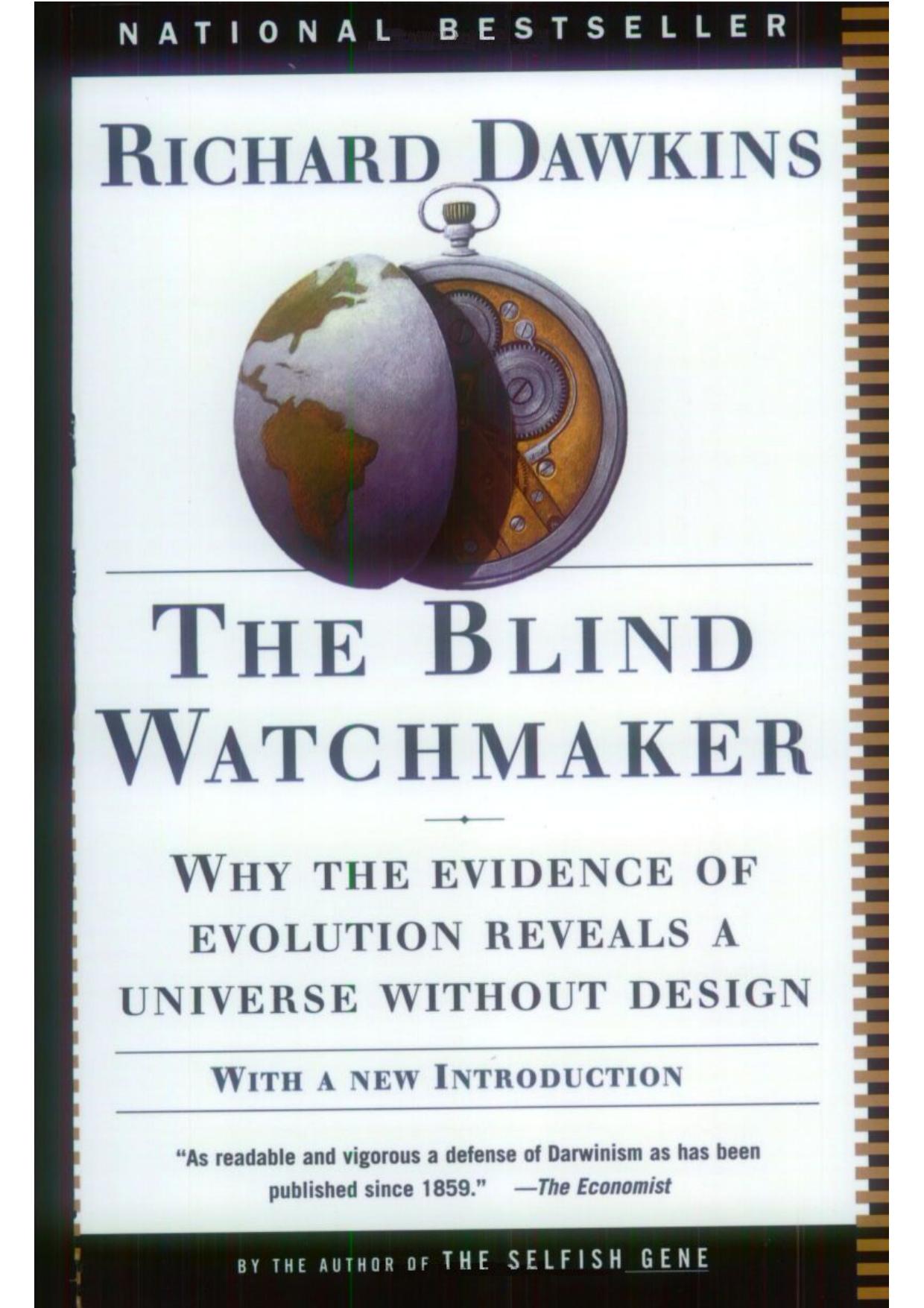The Blind Watchmaker: Why the Evidence of Evolution Reveals a Universe without Design by Richard Dawkins

Author:Richard Dawkins [Dawkins, Richard]
Language: eng
Format: azw3, pdf
Publisher: W. W. Norton & Company
Published: 2015-09-28T04:00:00+00:00
CHAPTER 7
Constructive evolution
People sometimes think that natural selection is a purely negative force, capable of weeding out freaks and failures, but not capable of building up complexity, beauty and efficiency of design. Does it not merely subtract from what is already there, and shouldn’t a truly creative process add something too? One can partially answer this by pointing to a statue. Nothing is added to the block of marble. The sculptor only subtracts, but a beautiful statue emerges nevertheless. But this metaphor can mislead, for some people leap straight to the wrong part of the metaphor — the fact that the sculptor is a conscious designer — and miss the important part: the fact that the sculptor works by subtraction rather than addition. Even this part of the metaphor should not be taken too far. Natural selection may only subtract, but mutation can add. There are ways in which mutation and natural selection together can lead, over the long span of geological time, to a building up of complexity that has more in common with addition than with subtraction. There are two main ways in which this build-up can happen. The first of these goes under the name of ‘coadapted genotypes’; the second under the name of ‘arms races’. The two are superficially rather different from one another, but they are united under the headings of ‘coevolution’ and ‘genes as each others’ environments’.
First, the idea of ‘coadapted genotypes’. A gene has the particular effect that it does only because there is an existing structure upon which to work. A gene can’t affect the wiring up of a brain unless there is a brain being wired up in the first place. There won’t be a brain being wired up in the first place, unless there is a complete developing embryo. And there won’t be a complete developing embryo unless there is a whole program of chemical and cellular events, under the influence of lots and lots of other genes, and lots and lots of other, non-genetic, causal influences. The particular effects that genes have are not intrinsic properties of those genes. They are properties of embryological processes, existing processes whose details may be changed by genes, acting in particular places and at particular times during embryonic development. We saw this message demonstrated, in elementary form, by the development of the computer biomorphs.
In a sense, the whole process of embryonic development can be looked upon as a cooperative venture, jointly run by thousands of genes together. Embryos are put together by all the working genes in the developing organism, in collaboration with one another. Now comes the key to understanding how such collaborations come about. In natural selection, genes are always selected for their capacity to flourish in the environment in which they find themselves. We often think of this environment as the outside world, the world of predators and climate. But from each gene’s point of view, perhaps the most important part of its environment is all the other genes that it encounters.
Download
The Blind Watchmaker: Why the Evidence of Evolution Reveals a Universe without Design by Richard Dawkins.pdf
This site does not store any files on its server. We only index and link to content provided by other sites. Please contact the content providers to delete copyright contents if any and email us, we'll remove relevant links or contents immediately.
Sapiens: A Brief History of Humankind by Yuval Noah Harari(14308)
Sapiens by Yuval Noah Harari(5316)
Pale Blue Dot by Carl Sagan(4944)
Homo Deus: A Brief History of Tomorrow by Yuval Noah Harari(4867)
Livewired by David Eagleman(3721)
Origin Story: A Big History of Everything by David Christian(3664)
Brief Answers to the Big Questions by Stephen Hawking(3389)
Inferior by Angela Saini(3291)
Origin Story by David Christian(3167)
Signature in the Cell: DNA and the Evidence for Intelligent Design by Stephen C. Meyer(3097)
The Gene: An Intimate History by Siddhartha Mukherjee(3071)
The Evolution of Beauty by Richard O. Prum(2961)
Aliens by Jim Al-Khalili(2801)
How The Mind Works by Steven Pinker(2768)
A Short History of Nearly Everything by Bryson Bill(2653)
Sex at Dawn: The Prehistoric Origins of Modern Sexuality by Ryan Christopher(2498)
From Bacteria to Bach and Back by Daniel C. Dennett(2459)
Endless Forms Most Beautiful by Sean B. Carroll(2439)
Who We Are and How We Got Here by David Reich(2412)
